Chalons, Lac du Der and Troyes
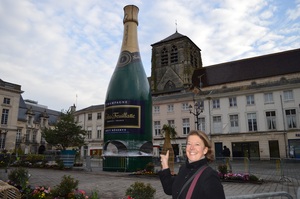 Close your eyes and picture Champagne, a flute of corn coloured bubbles, rows of bright green vines, the town of Rheims with its Gothic cathedral and Epernay with the Avenue de Champagne carving a broad furrow through the centre of town. Champagne is very much my tipple of choice and to quote Bette Davies, “There comes a time in every woman’s life when the only thing that helps is a glass of champagne.” However, there are lesser known parts of the region waiting to be explored and other activities that perfectly compliment the popular champagne routes and tastings as I was to discover earlier in the year.
Close your eyes and picture Champagne, a flute of corn coloured bubbles, rows of bright green vines, the town of Rheims with its Gothic cathedral and Epernay with the Avenue de Champagne carving a broad furrow through the centre of town. Champagne is very much my tipple of choice and to quote Bette Davies, “There comes a time in every woman’s life when the only thing that helps is a glass of champagne.” However, there are lesser known parts of the region waiting to be explored and other activities that perfectly compliment the popular champagne routes and tastings as I was to discover earlier in the year.
Seemingly every city with a canal (Bruges, Stockholm, even London Paddington to name but a few) is named as the ‘Venice of the North’. I can now add the ‘sparkling Venice’ to canal cities I’ve visited.
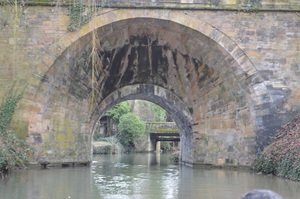 Chalons-en-Champagne is a city crossed by canals and makes a good base for local exploration. Not content with the usual boat trips to explore the canals, Metamorph’eau’ses is a unique light and sound show along the water, costing approximately 3.5 million euros to produce, it’s an unusual and spectacularly visual way of lighting up the tunnels as you pass through in an electric boat. This year the church of Notre-Dame-en-Vaux and the Putte Savatte Bridge will be two new sites to be lit up.
Chalons-en-Champagne is a city crossed by canals and makes a good base for local exploration. Not content with the usual boat trips to explore the canals, Metamorph’eau’ses is a unique light and sound show along the water, costing approximately 3.5 million euros to produce, it’s an unusual and spectacularly visual way of lighting up the tunnels as you pass through in an electric boat. This year the church of Notre-Dame-en-Vaux and the Putte Savatte Bridge will be two new sites to be lit up.
France’s famous wine region is now encouraging visitors to head to its great lakes in the centre of the region (Lac du Der and lakes of the Foret d’Orient) to observe impressive displays of birds. Common cranes, greylag geese, white fronted and bean geese, white tailed eagles, whooper and Bewick’s swans, goldeneyes and many other species of migrating birds can be observed. The most famous of all is the common crane, which, whilst rare to spot in the UK, stops off in tens of thousands in Champagne. These elegant birds come in to rest at the great lakes en route from their nesting grounds in Scandinavia to winter in the warmer climes of Spain. The dusk arrivals and dawn departures are a memorable sight to behold from November to March.
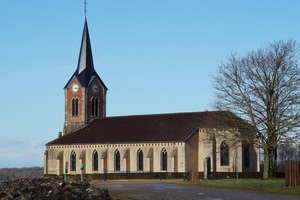 The largest of the Champagne Lakes is the Lac de Der with 4800 ha of water and 77 km of shoreline, listed as a wildlife reserve since 1978 it is one of the most important sites in France for bird watching. Even though I’m from the Suffolk coast, near twitcher’s mecca Minsmere, I’m not much of a bird watcher. I think the cranes must have realised this as on the day of my visit, it was one of those “you should have been here last week mate” or the French equivalent kind of days. The cranes had taken flight but I was reliably informed that only days earlier they were there in their thousands. I wasn’t that disappointed as the lake itself is a peaceful, stunning spot with a unique history especially relating to the 3 villages that were wiped of the map to create this artificial lake (the 2nd largest in Western Europe). The church of the village of Champaubert aux Bois being the sole surviving building now keeping a watchful eye over the lake.
The largest of the Champagne Lakes is the Lac de Der with 4800 ha of water and 77 km of shoreline, listed as a wildlife reserve since 1978 it is one of the most important sites in France for bird watching. Even though I’m from the Suffolk coast, near twitcher’s mecca Minsmere, I’m not much of a bird watcher. I think the cranes must have realised this as on the day of my visit, it was one of those “you should have been here last week mate” or the French equivalent kind of days. The cranes had taken flight but I was reliably informed that only days earlier they were there in their thousands. I wasn’t that disappointed as the lake itself is a peaceful, stunning spot with a unique history especially relating to the 3 villages that were wiped of the map to create this artificial lake (the 2nd largest in Western Europe). The church of the village of Champaubert aux Bois being the sole surviving building now keeping a watchful eye over the lake.
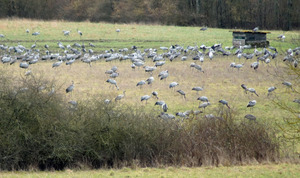 If churches and architecture are your thing, then you’re in for a treat. The combination of clayey soil and oak timber led to the development of Der Country’s typical local architecture: half- timbered buildings. There’s a church lined scenic route to explore, the churches lit up by magnificent stained glass windows with their gleaming colours embodying the 16th century School of Troyes.
If churches and architecture are your thing, then you’re in for a treat. The combination of clayey soil and oak timber led to the development of Der Country’s typical local architecture: half- timbered buildings. There’s a church lined scenic route to explore, the churches lit up by magnificent stained glass windows with their gleaming colours embodying the 16th century School of Troyes.
Troyes is a living monument to its fantastic medieval and Renaissance past, the seat of the ruling Comtes de Champagne in the Middle Ages, its narrow streets have escaped catastrophe since the Great Fire of 1524. In the Ruelle des Chats, the overhanging first floors of the medieval buildings on either side of the street almost touch each other, so close that you could almost jump from one to the other. Troyes’s other claim to fame are its factory outlet stores and both Lacoste and Petit Bateau were created here.
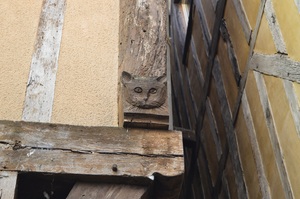 It’s a part of champagne that is often overlooked but is has much to offer, particularly for bird watchers and lovers of half-timbered houses and churches and of course anybody, myself included who is partial to a glass or two of bubbly.
It’s a part of champagne that is often overlooked but is has much to offer, particularly for bird watchers and lovers of half-timbered houses and churches and of course anybody, myself included who is partial to a glass or two of bubbly.
How to get there
Petra travelled by Eurostar from London St Pancras to Paris Gare du Nord and then took the TGV to Rheims from nearby Gare de L’Est and returned on the same route via Troyes. Tickets can be booked through Voyages SNCF.
Petra stayed at La Maison des Officiers and Auberge du Lac.
More information
www.aube-champagne.com/en
www.chalons-tourisme.com
www.lacduder.com/en
www.tourisme-troyes.com











